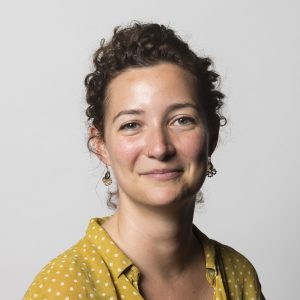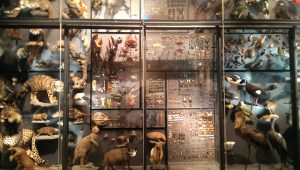Meet Fatima: Stories of social exclusion & science
 This week we at Science Grrl are delighted to bring you a guest post from Emily Dawson, on the particular issues for young women at the intersections of class and race.
This week we at Science Grrl are delighted to bring you a guest post from Emily Dawson, on the particular issues for young women at the intersections of class and race.
What happens when being passionate about science isn’t enough to help you do science stuff? I first met Fatima in 2010 as part of a research project looking at social exclusion from public science and informal science learning activities (in other words, the stuff that happens in STEM clubs, science museums or other science related hobbies). Fatima was in her mid-20s and a member of the Somali community group involved in the project. She grew up and went to school in London. Unlike most of the 60 other participants in the project, she was one of three with a passion for science. As she put it, “I’m a weirdo”, because unlike her friends and family she liked science!
Fatima’s stories are important because she represents a particular quandary. People often think that the problem with recruitment and involvement in science is due to a lack of interest. In other words, if we can just get people interested in science, they will flock to museum events, use public science resources and flood into science careers. The stories that Fatima told me suggest this is far from the case. For example, Fatima loved watching science on TV, she read science books for fun. She talked enthusiastically about engineering and biology and about researching her ideas. It seems safe to say Fatima loved science.
What Fatima didn’t love were informal science institutions and public science events. In fact, as she told me early on in the project “I hate museums”. She went further; “it wasn’t enjoyable, any museum that you went to as a kid, it’s not really what you would say is the best time that you had at school, like it was a punishment”. Fatima had visited many science museums and public science activities with her school. Sadly, these visits had not supported her love of science. Instead they left her feeling that public science events and science museums were not places for her or for her community. As she put it “I don’t know anyone that’s decided one day ‘oh, let’s go to the museum’”.
Fatima told me she had never seen any marketing for science museums or other public science resources in her neighbourhood or on community radio stations. She felt that public science resources did not meet the needs of her community. She talked about feeling sidelined or left out from public science spaces as a result. For example, she said even basic information about where museums were or if they were free was missing from her community.
Fatima’s stories speak to a key problem in public science spaces and events: exclusion is embedded in practice, even well meaning practices. Fatima loved science not because of but despite her informal science learning experiences in public science spaces. Fatima’s experiences of zoos, museums and similar public science activities showed her that her community was not wanted or welcome. Now, it’s one thing to dislike a particular science centre and not go back there. But it’s another thing altogether if your public science experiences leave you feeling that all museums, zoos and similar spaces aren’t for you or for your community. That’s structural social exclusion.
Stories like Fatima’s show that social exclusion from science is more complex and more embedded than it seems at first. If we really want to make science more inclusive for girls and for everyone, we have to go beyond framing a lack of interest in science as the problem. Instead we have to radically reimagine how science is presented, engaged with and talked about across the full range of careers events, museum spaces, zoos and botanic gardens, science clubs, as well as on TV and the mass media, in our homes and schools. If science is worth anything, then it must be accessible and welcoming to everyone.
You can read more about Fatima in this book chapter, “When science is someone else’s world” which is pages 82 to 92 in a book called “Intersections of Formal and Informal Science” edited by Lucy Avraamidou and Wolff-Michael Roth, published in 2016 by Routledge. You can also read more about the research here & here in open access (aka: free!) papers.

